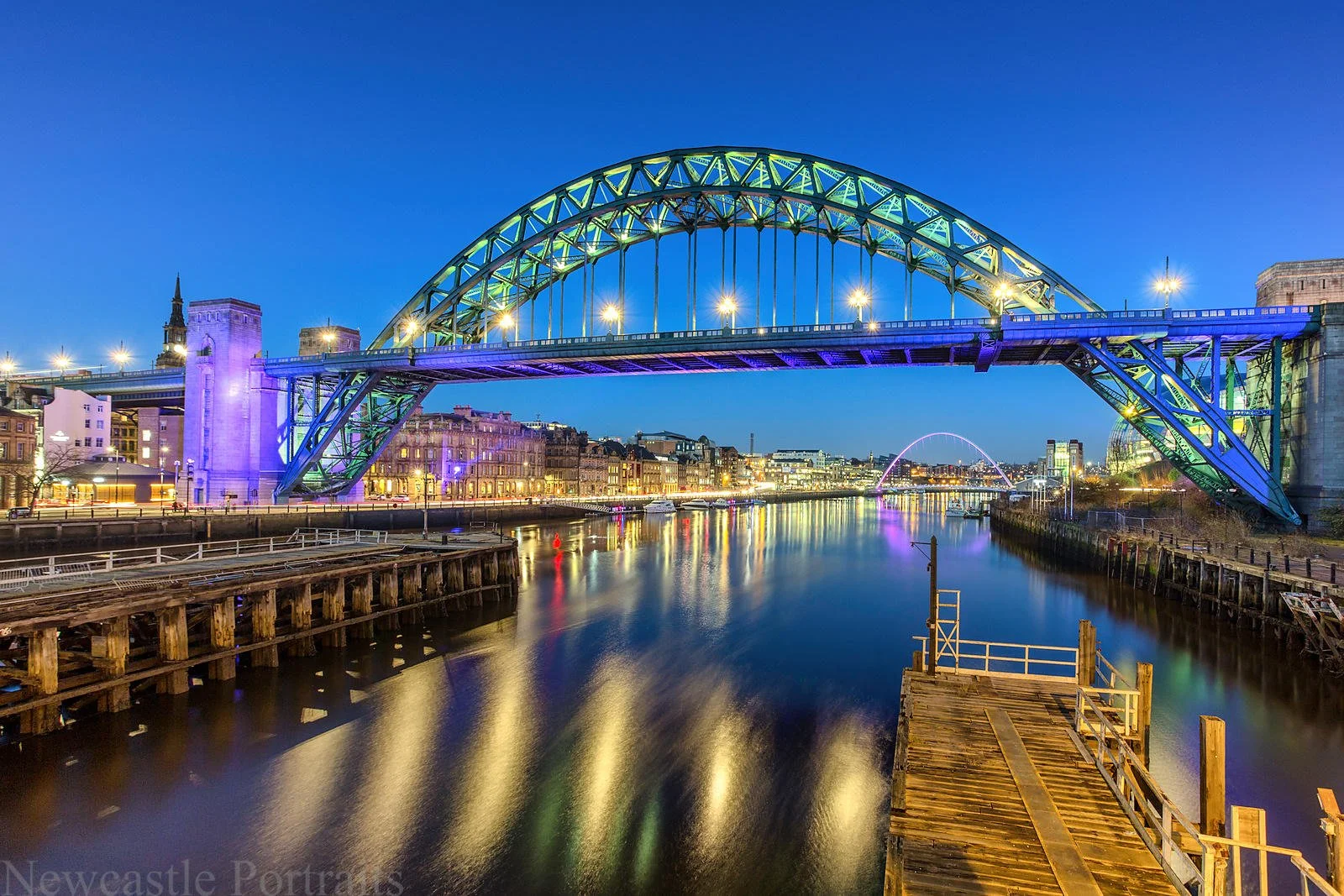Newcastle's Cathedrals
Newcastle upon Tyne is a wonderful place and I’m not just saying that because my parents were born in Gateshead, across the river from the city and connected to it by the seven bridges that cross the Tyne. In 2019, various travel sites named Newcastle to be the friendliest city in the UK.
On this trip, a friend joined me and it was great to be able to share the experience and to attend a fabulous concert at The Sage in Gateshead.
What is today Newcastle was originally called Pons Aelius ("Hadrian's bridge"), a Roman fort and bridge across the River Tyne. It was given the family name of the Roman Emperor Hadrian, who founded it in the 2nd century AD. It was a fort town that was part of Hadrian's Wall a 73 mile (117 km) wall, that span the width of Britain; the Wall incorporated the Vallum, a large rearward ditch with parallel mounds, and was built primarily for defence, to prevent unwanted immigration and the incursion of Pictish tribes from the north, not as a fighting line for a major invasion.
After the Romans left Britain, Newcastle became part of the powerful Anglo-Saxon kingdom of Northumbria and was known throughout this period as Munucceaster (sometimes modernised as Monkchester). Danish invasions destroyed most of the settlements on the Tyne and following the 1088 rebellion against the Normans, Monkchester was all but destroyed by Odo of Bayeux.
Because of its strategic position relative to Scotland, Robert Curthose, son of William the Conqueror, erected a wooden castle there in the year 1080. The town was henceforth known as Novum Castellum or New Castle. It became England’s northern fortress and was successfully defended against a number of Scottish incursions.
The town grew steadily and In the 18th century, Newcastle was the country's fourth-largest print centre after London, Oxford and Cambridge, and the Literary and Philosophical Society of 1793, with its erudite debates and a large stock of books in several languages, predated the London Library by half a century. Some founder members of the Literary and Philosophical Society were abolitionists.
Newcastle became a city on 3 June 1882. In the 19th century, shipbuilding and heavy engineering were central to the city's prosperity; and the city was a powerhouse of the Industrial Revolution. After the second world war, heavy industry declined slowly and is the commercial, educational and cultural hub of North East England. The UK's first biotechnology village, the Centre for Life, is located by Central Station.
Newcastle Anglican Cathedral, formally the Cathedral Church of St Nicholas, was founded in 1091 during the same period as the nearby castle, the Norman church was destroyed by fire in 1216 and the current building was completed in 1350, so is mostly of the Perpendicular style of the 14th century. Its tower is noted for its 15th-century lantern spire. Heavily restored in 1777, the building was raised to cathedral status in 1882 when it became known as the Cathedral Church of St Nicholas (patron saint of sailors and boats).
The cathedral is notable for its unusual lantern spire, which was constructed in 1448. For hundreds of years, it was the main navigation point for ships using the River Tyne. At its base, the tower measures 36 ft 9 in (11.20 m) by 35 ft (11 m) and it is 194 ft 2 in (59.18 m) from the base to the top of the steeple.
Here are some photos of this stunning cathedral.
Newcastle Catholic Cathedral or The Cathedral Church of St Mary was designed by Augustus Welby Pugin and built between 1842 and 1844. St Mary's became a cathedral church in 1850 becoming the first cathedral in Newcastle, as the Anglican St. Nicholas' Cathedral didn't become a cathedral until 1882. On 21st August 1860, the Cathedral was dedicated to Our Lady of the Assumption.
The cathedral is a fine example of the Gothic Revival style of architecture championed by Pugin. The stained glass in the Great East Window, Lady Chapel and Blessed Sacrament Chapel were done by William Wailes in 1843 to designs provided by Pugin.
There is a monument dedicated to Cardinal Basil Hume in the Monument Garden outside of the cathedral, which was opened by Queen Elizabeth II in 2002.
Here are some photos of Newcastle’s first cathedral.






